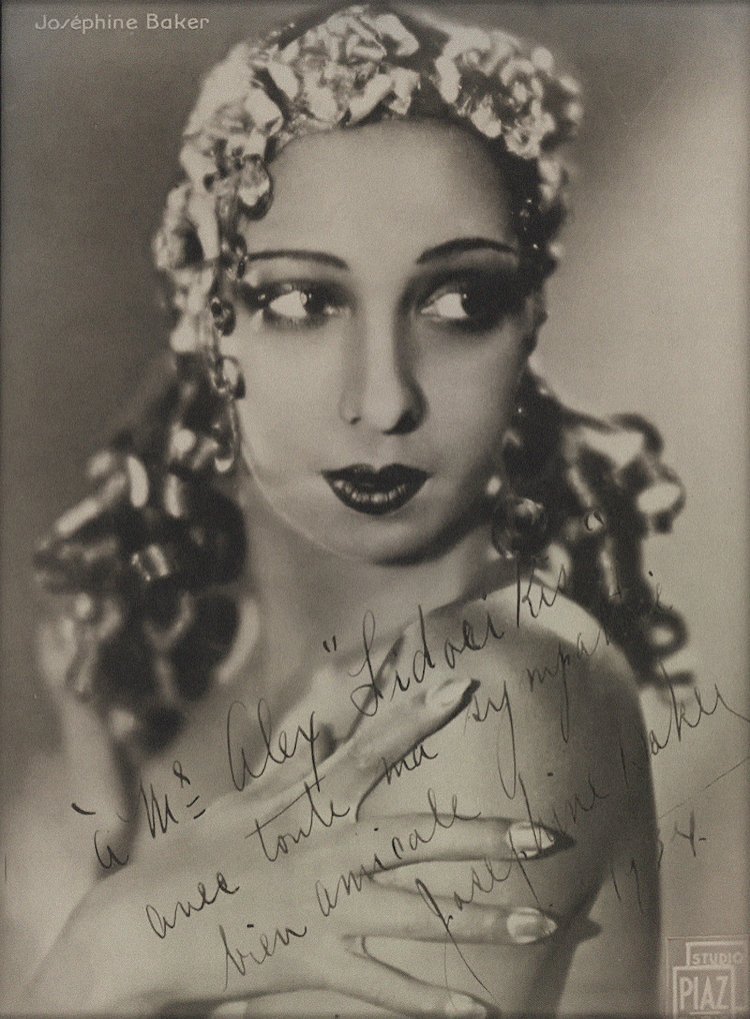 |
| Arletty in the operetta Xantho chez les Courtisanes, photograph by Boris Lipnitzki, 1932. |
 |
| (Interesting that his fingers and wrists have been retouched to make them more slender.) |
 |
| Elsa Schiaparelli, photograph by Man Ray, circa 1933. |
 |
| Opera singer and actress Françoise Rosay, 1932. |
 |
| Joséphine Baker, 1933. |
Antoni "Antek" Cierplikowski (24 December 1884, Sieradz, Poland - 5 July 1976, Sieradz, Poland), known as Monsieur Antoine and, professionally, as Antoine de Paris, considered the world's first modern celebrity hairdresser. Born in one of the oldest cities in Poland, he learned to dress hair from an uncle in nearby Łódź. He moved to Paris in 1901 and began work in the salon at the Galeries Lafayette, moving with his fashionable clientele to Deauville for the summers. After much success and with ever increasing celebrity, he opened the Antoine de Paris salon at 5 rue Cambon in 1911. Little more than a decade later, he had a salon in New York City, eventually owning sixty-seven salons in Europe and America. He dressed the hair of crowned heads and many of the world's most famous women, while living quite a grand and eccentric lifestyle, himself.
 |
| Photograph by Man Ray, 1933. |
Antoine is credited with, among other things: bobbed hair, the perm, hair lacquer, blond streaks, and the blue or lilac tinting of gray or white hair; in this last he was abetted by his famous client, interior decorator Elsie de Wolfe, Lady Mendl, who made the "blue rinse" into a popular and long lasting vogue. He was also known for his outrageous lacquered wigs, which were popular among performers and European "fashionistas" during the early Thirties.
 |
| Joséphine Baker, 1933. (Four images.) |
 |
| Elsa Schiaparelli, two photographs by Man Ray, circa 1933. |
 |
| Arletty, in the operetta Xantho chez les courtisanes, photograph by madame d'Ora, 1933. |
 |
| Brigitte Helm in L'Atlantide, 1932. (Two images.) |
He was always quite adept at self-promotion. And like any smart modern entrepreneur, he marketed his own hair products and cosmetics, and trained young hairdressers in his methods and employed them in his salons.
 |
| Some of the packaging from his line of beauty products. |
 |
| In Hollywood, with a most unlikely Bette Davis, 1933. (Two images.) |
 |
| Actress Frances Dee, 1933. |
 |
| Three fantasy wigs. |
 |
| Photograph by Brassaï. |
 |
| Ear clips by Boivin, photograph by Hoyningen-Heune, Vogue, 1934. |
Twinned highlights of his career came when he supervised - along with a cadre of his skilled hairdressers - the mass coiffing of court ladies at both the 1937 and 1953 British coronations. By the Sixties, though, his star had been eclipsed by a new breed of hairdressers - many of whom he'd trained - and he slipped into relative obscurity. In 1973, he returned to his hometown in Poland - then still a Soviet satellite - where three years later he died at the age of ninety-one.
 |
| Of note is the flawless toenail varnish. |
 |
| His grave in Sieradz, Poland, his birthplace. |
*
%20Fellowes,%201935.Horst-schiaparelli-1935vogue.png) |
| The Honorable Mrs. Reginald (Daisy) Fellowes, gown by Schiaparelli, photograph by Horst, Vogue, 1935. |
 |
Elsa Schiaparelli, photograph by Man Ray, circa 1933.
|
 |
| Life mask of Dolores Wilkinson and Boucheron bracelet, photograph by Hoyningen-Heune, 1932. |








































































%20Fellowes,%201935.Horst-schiaparelli-1935vogue.png)



